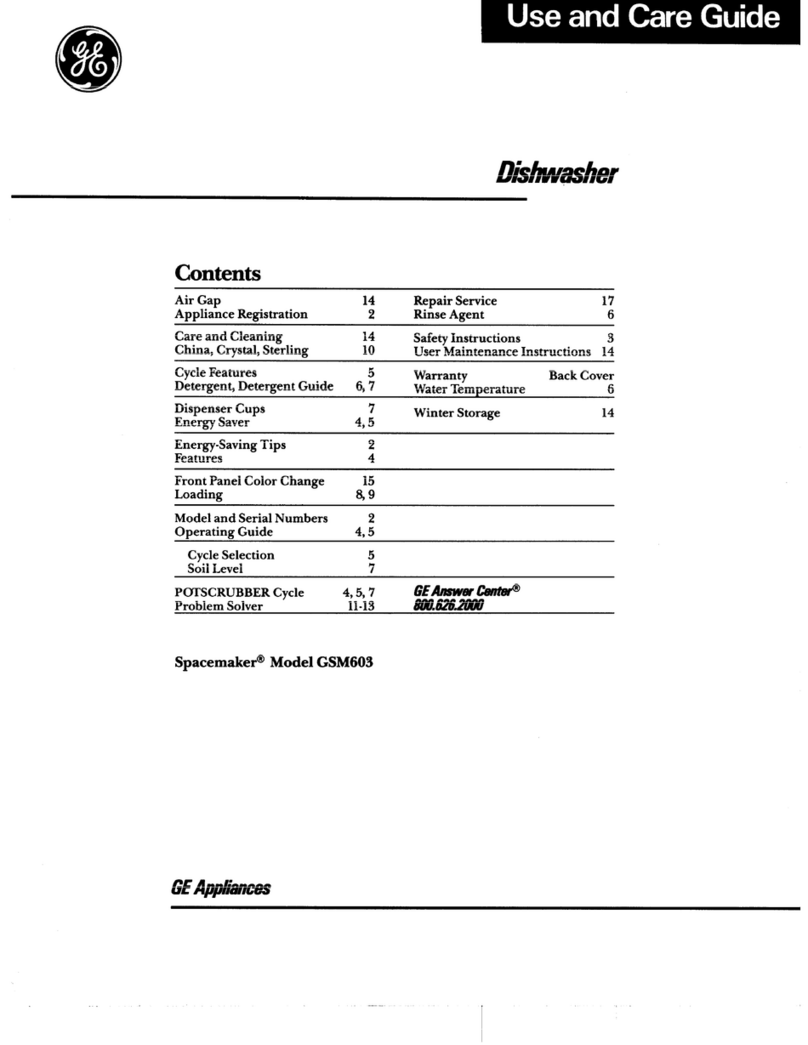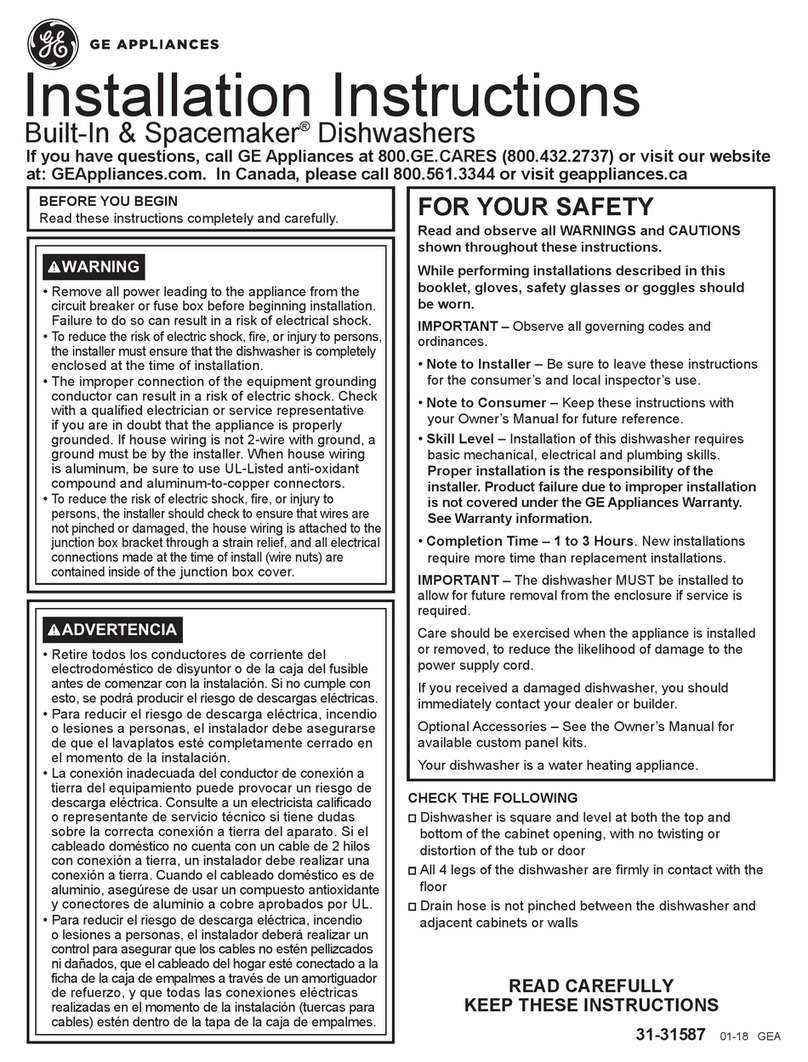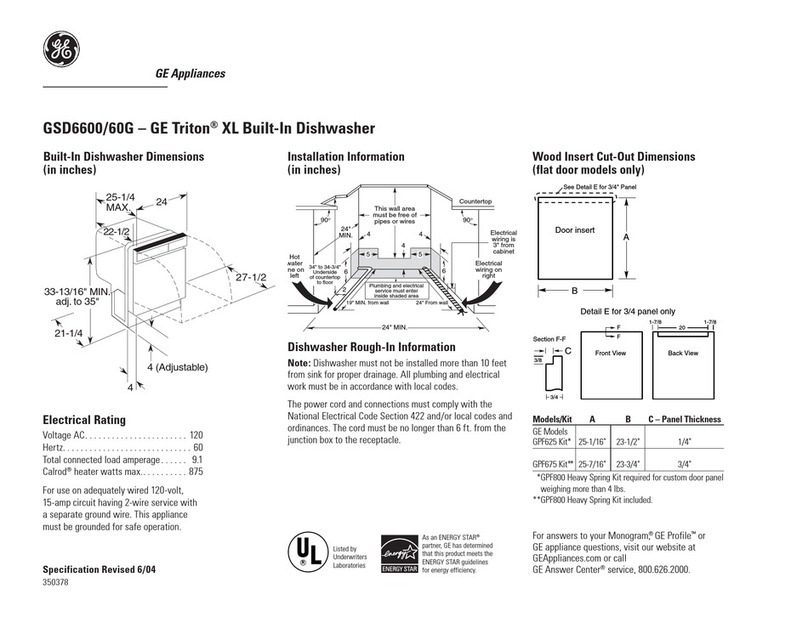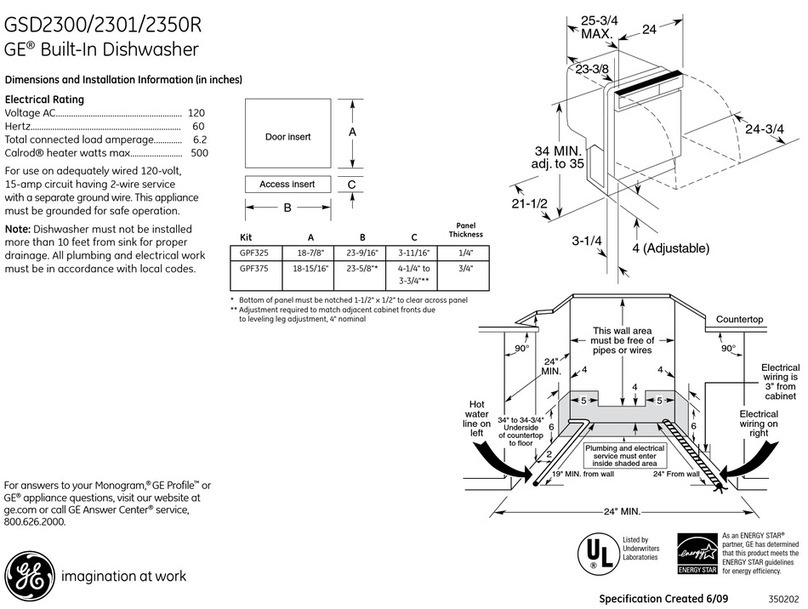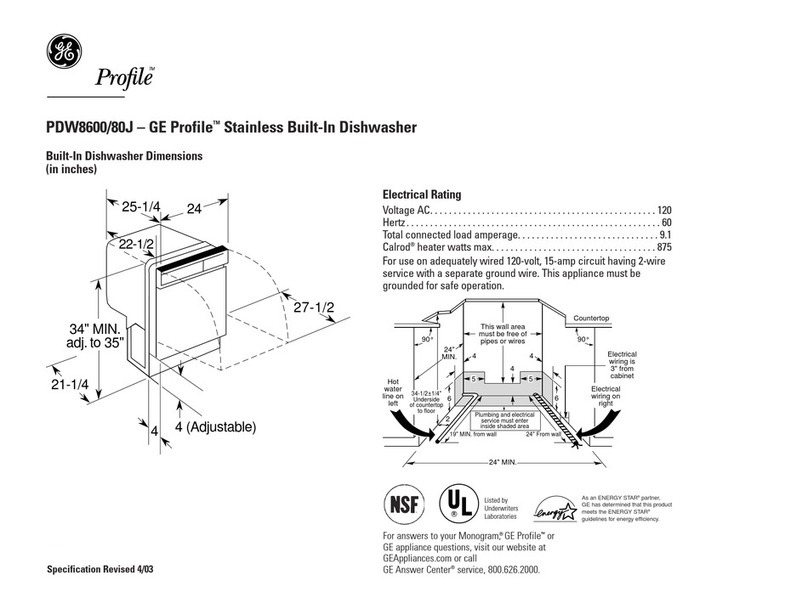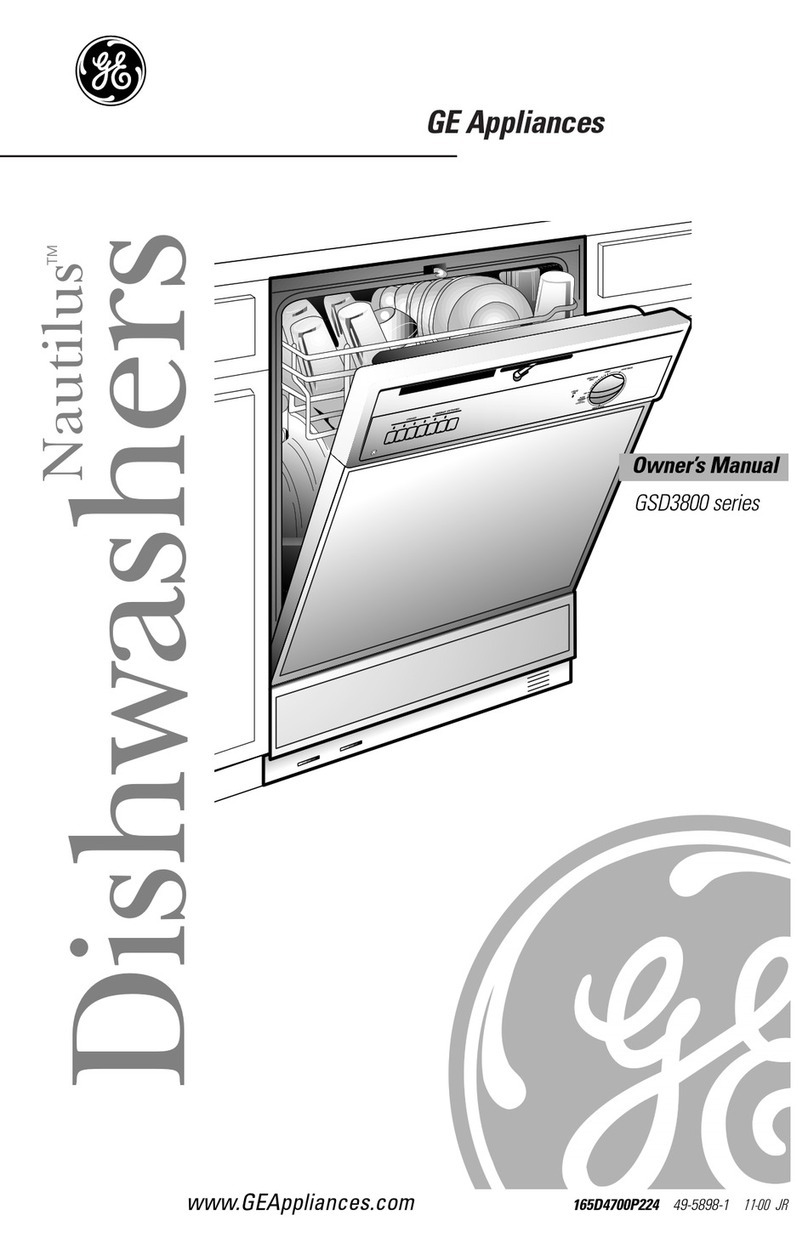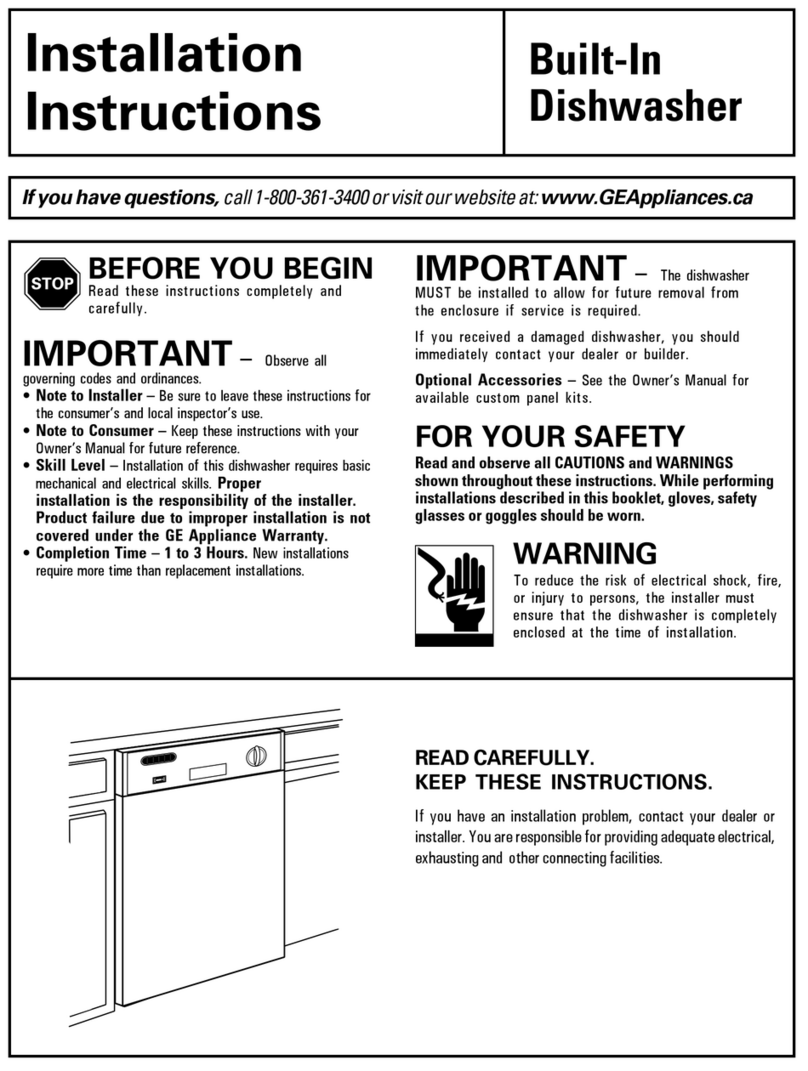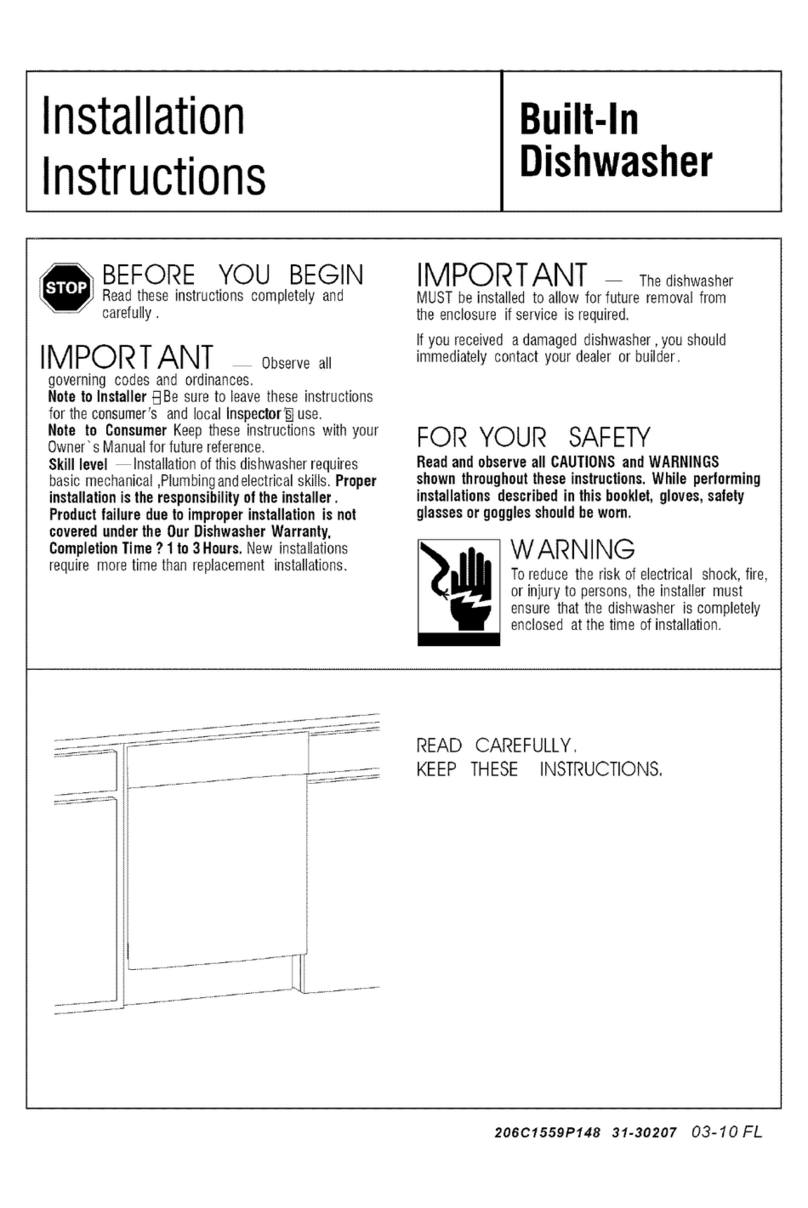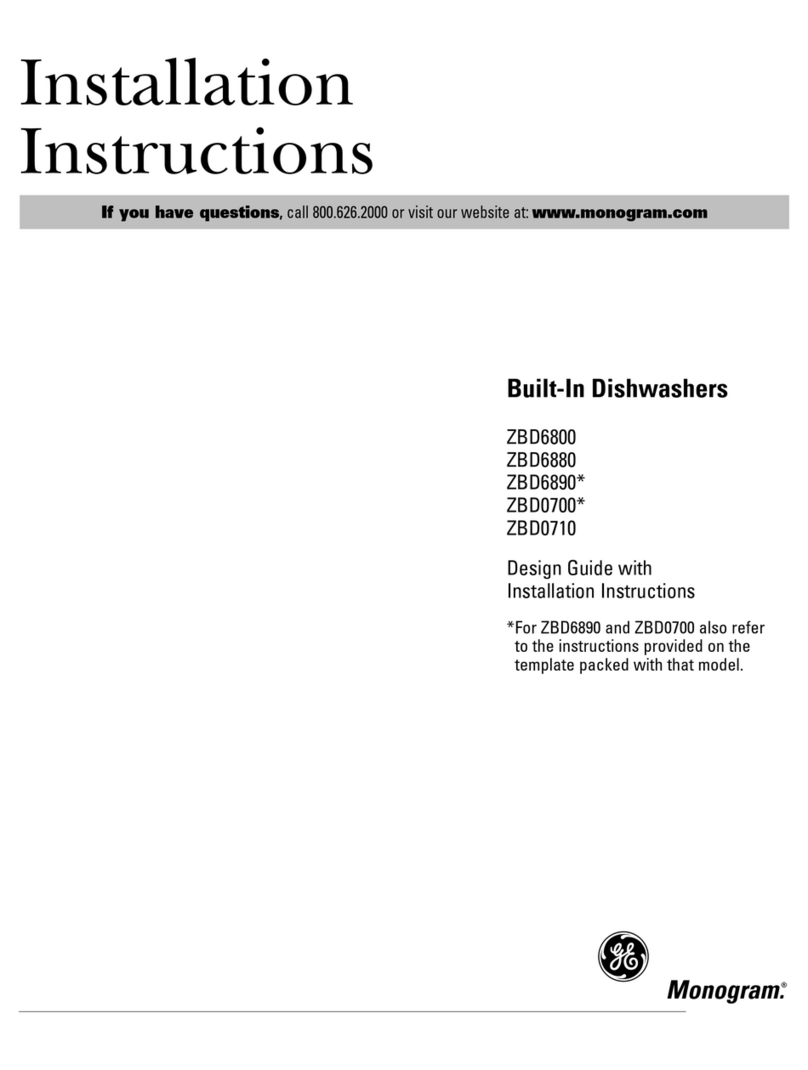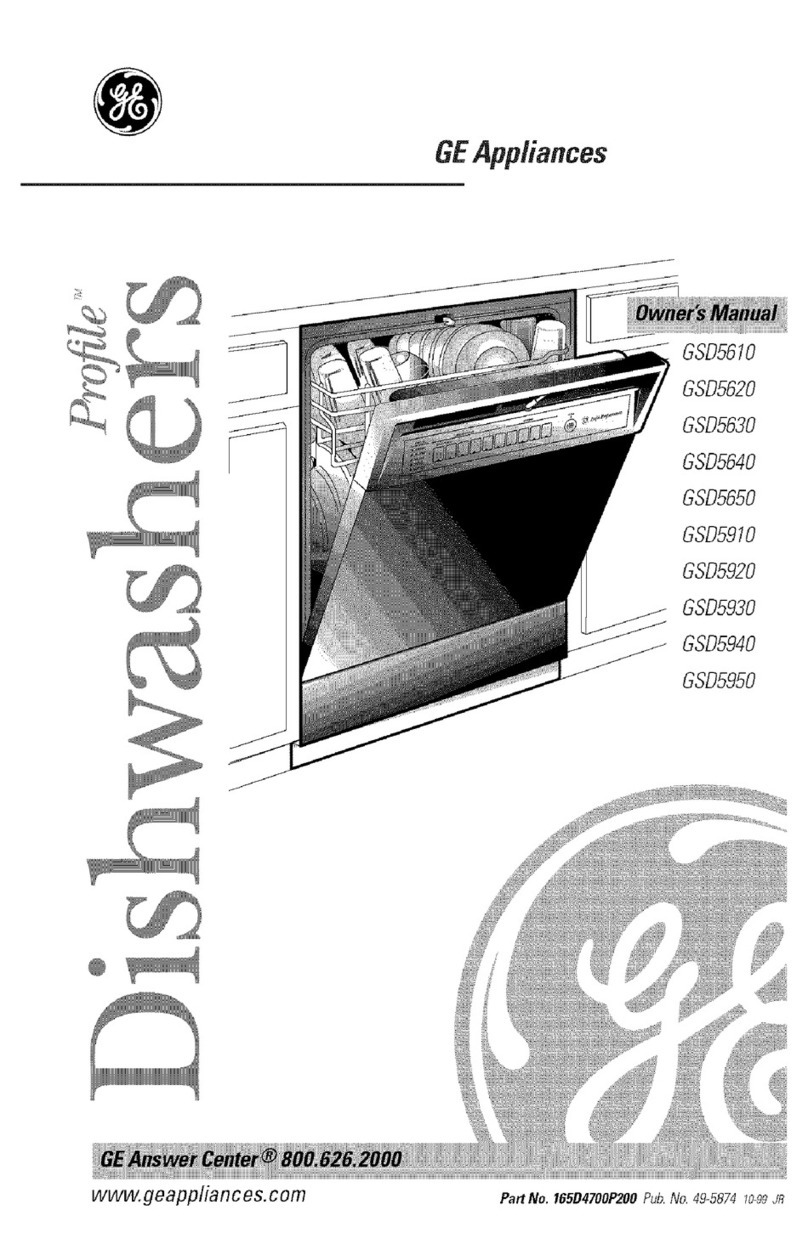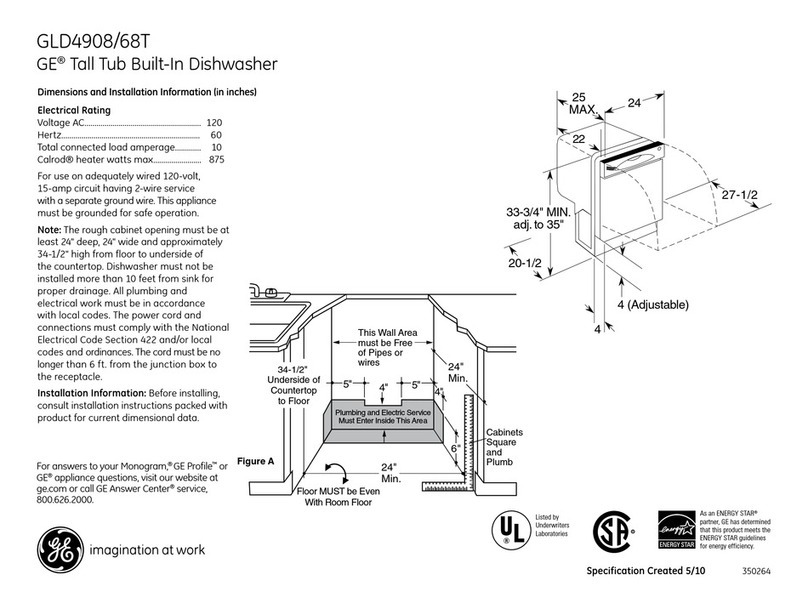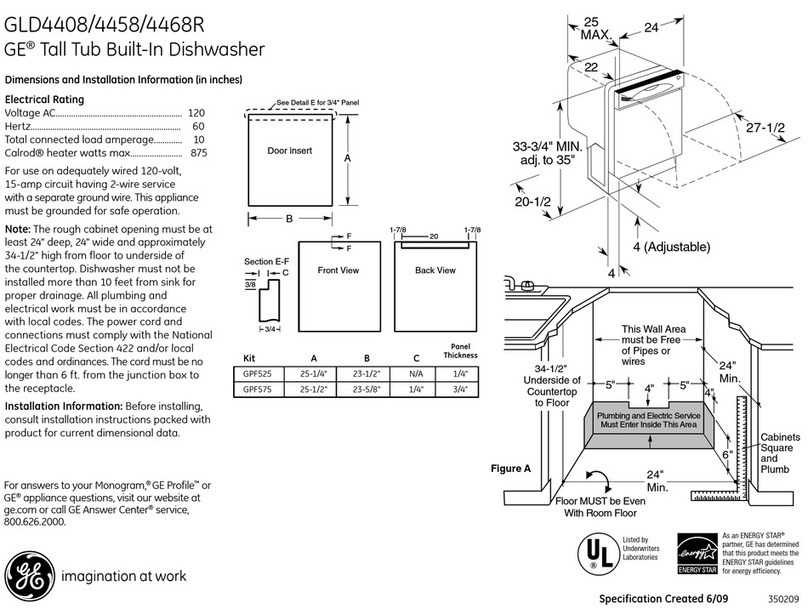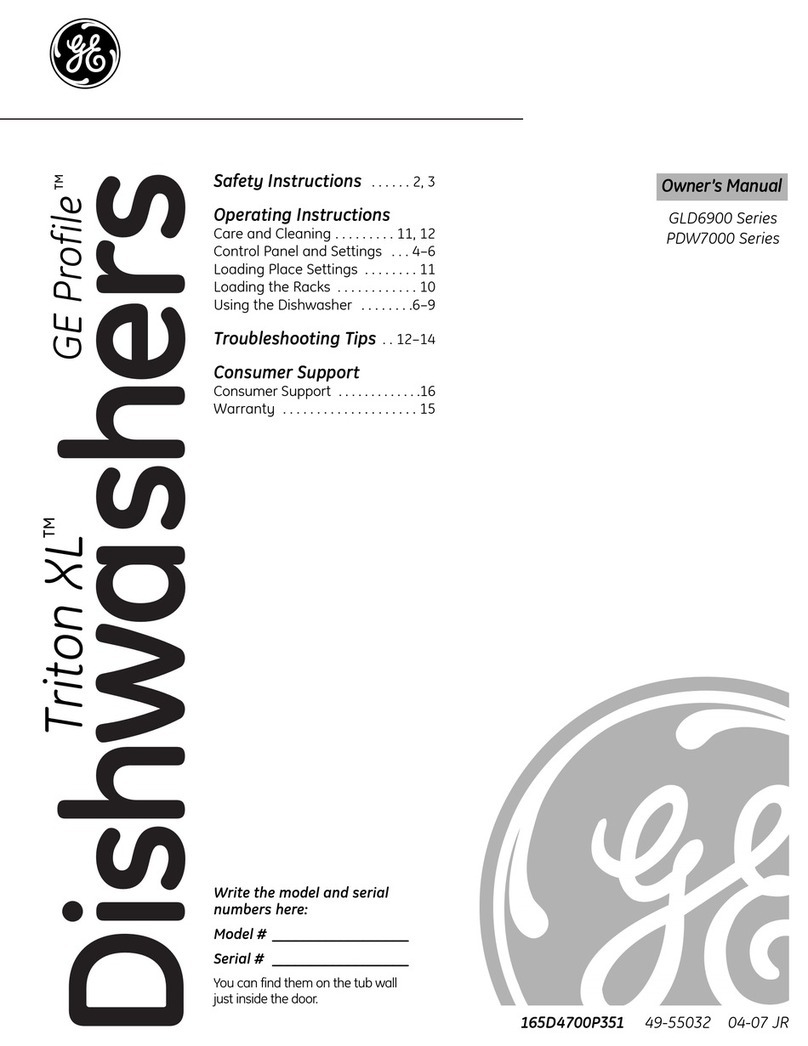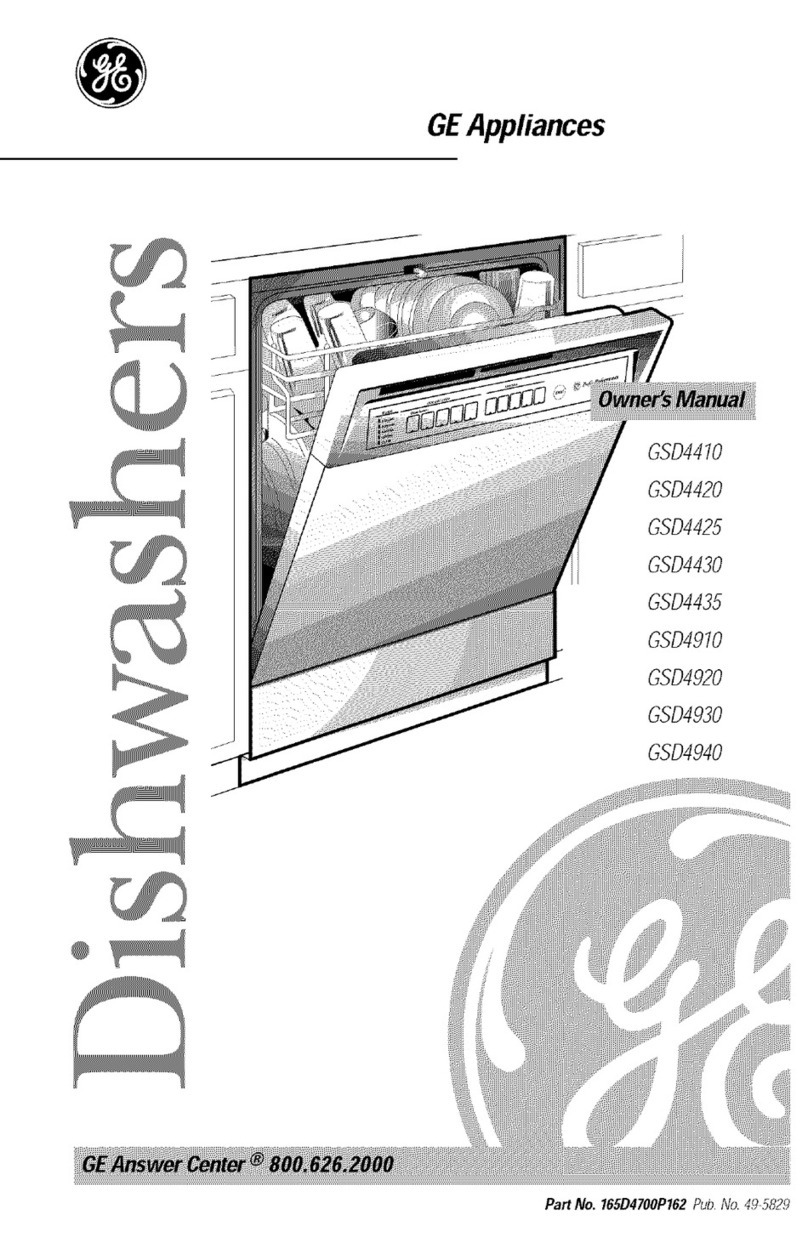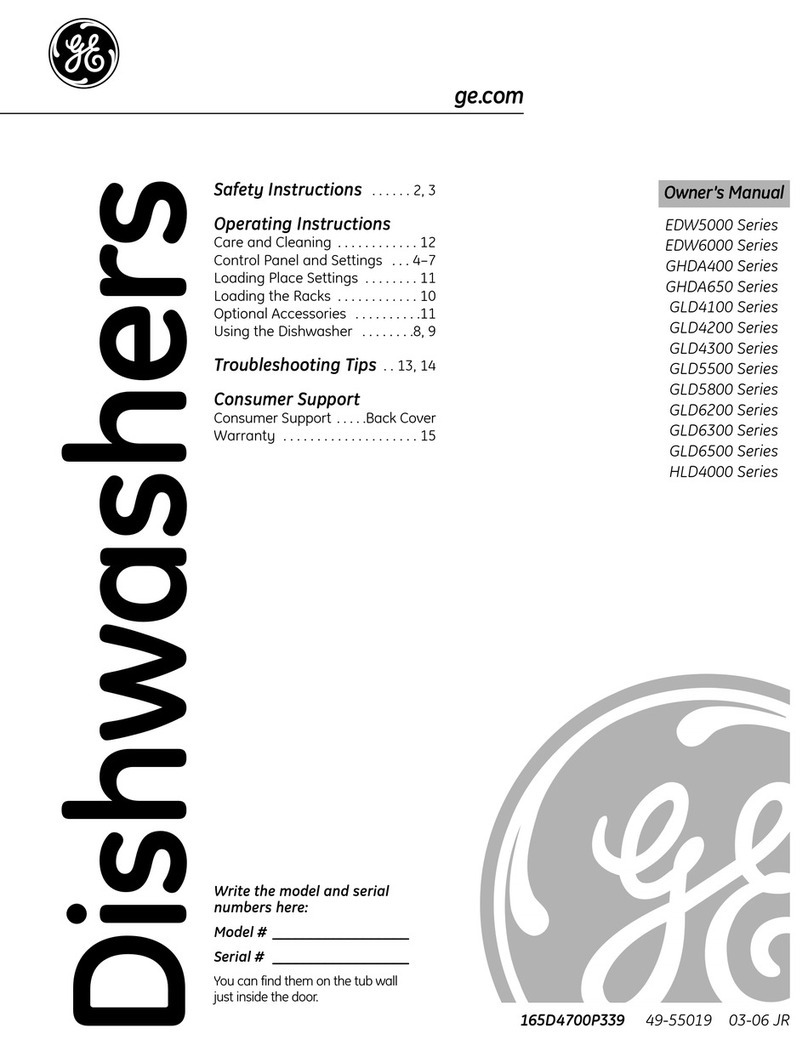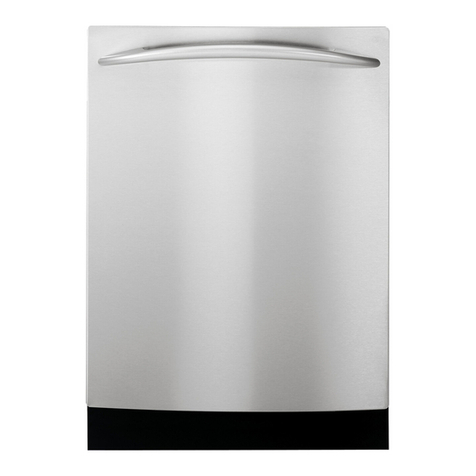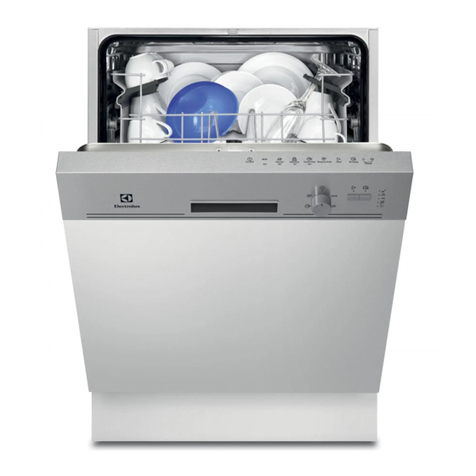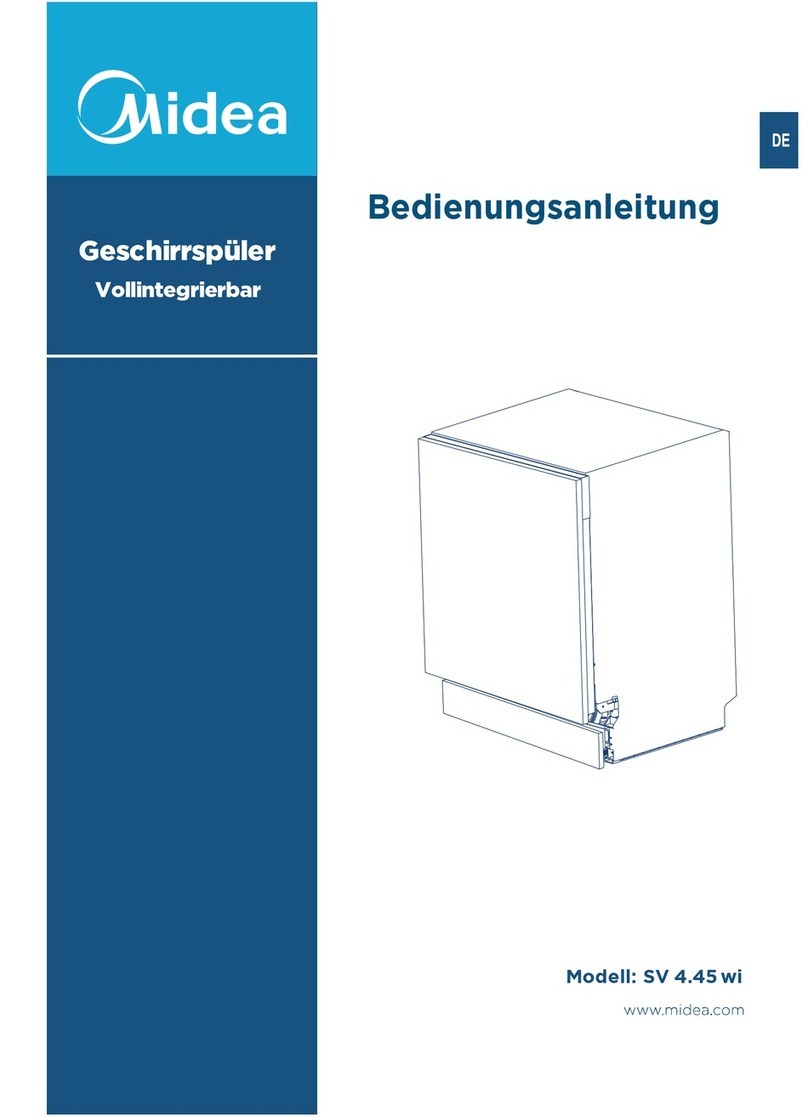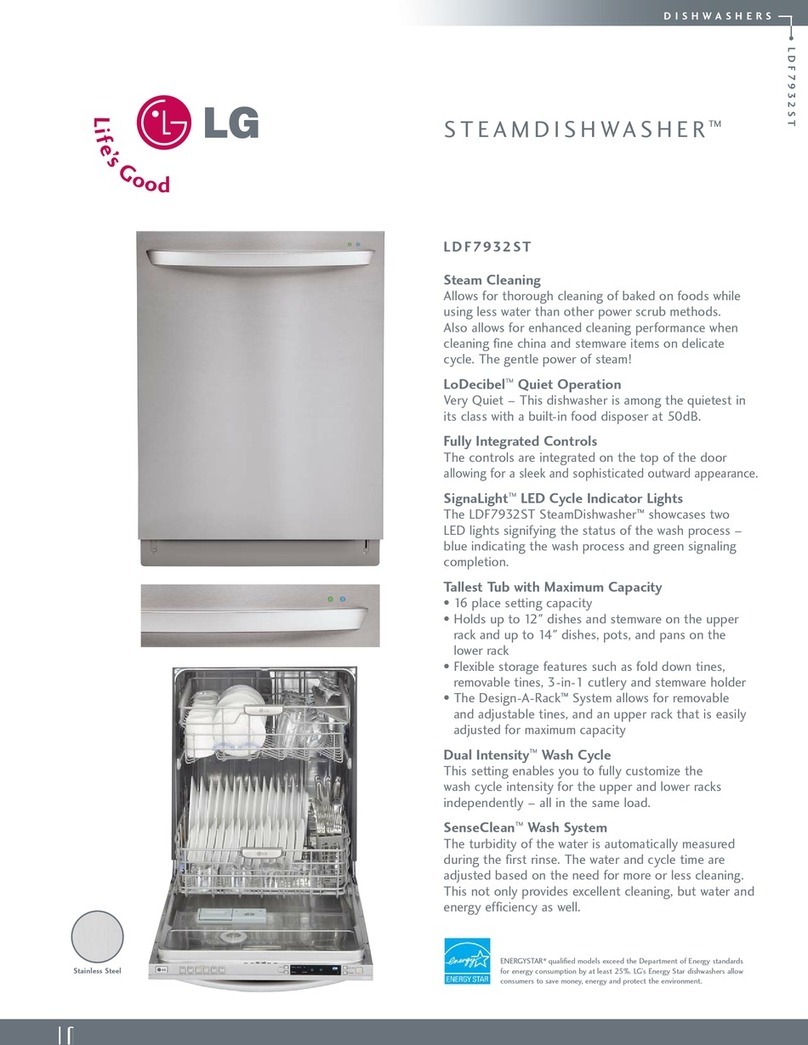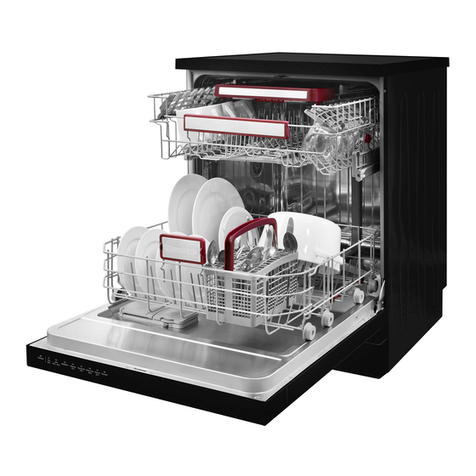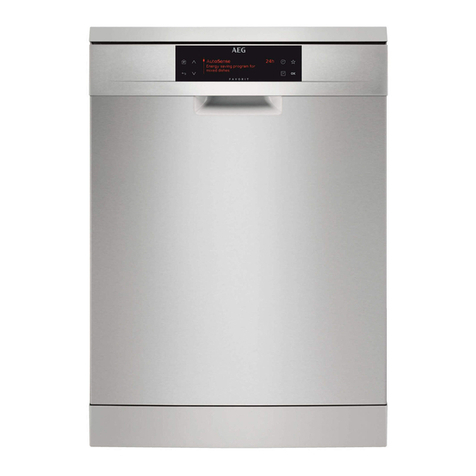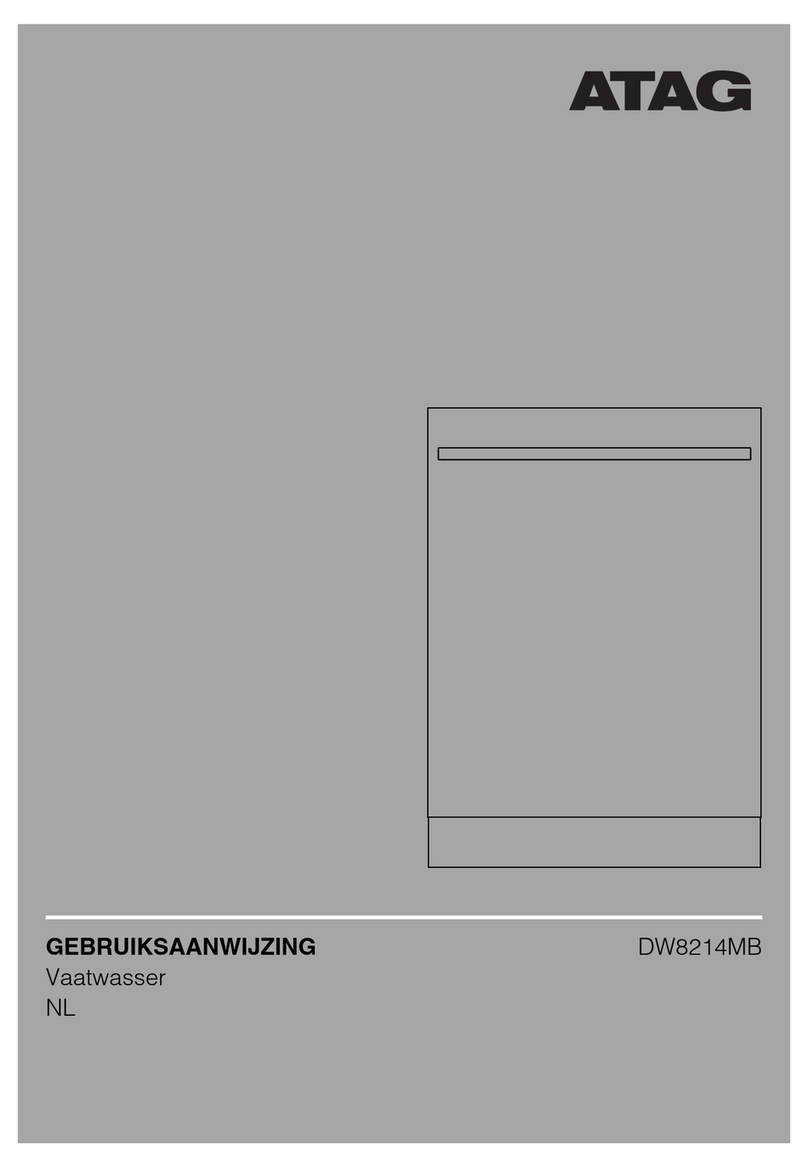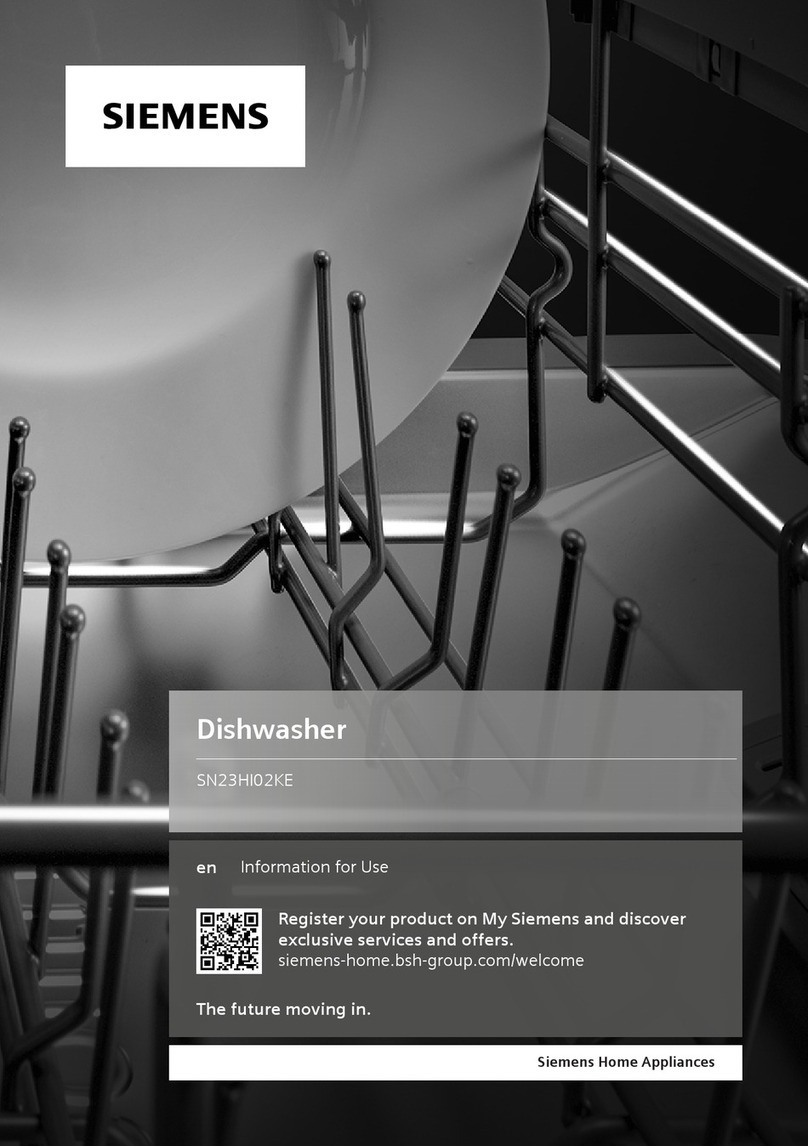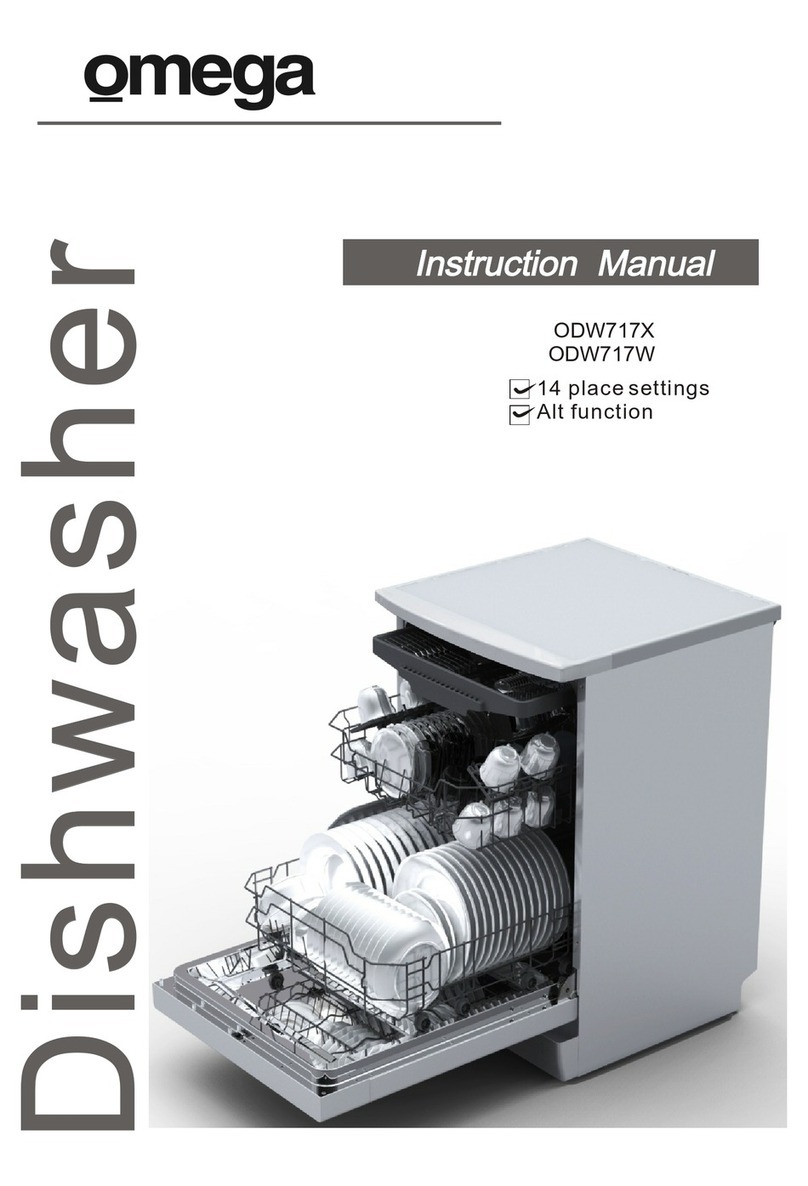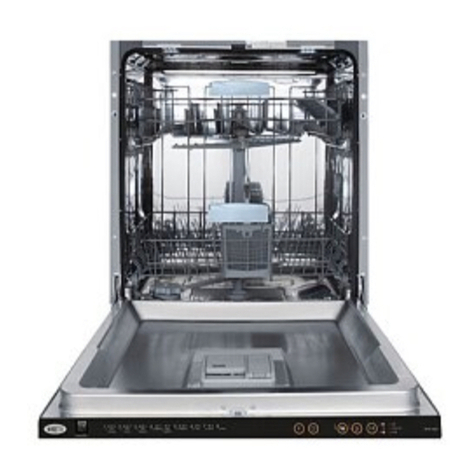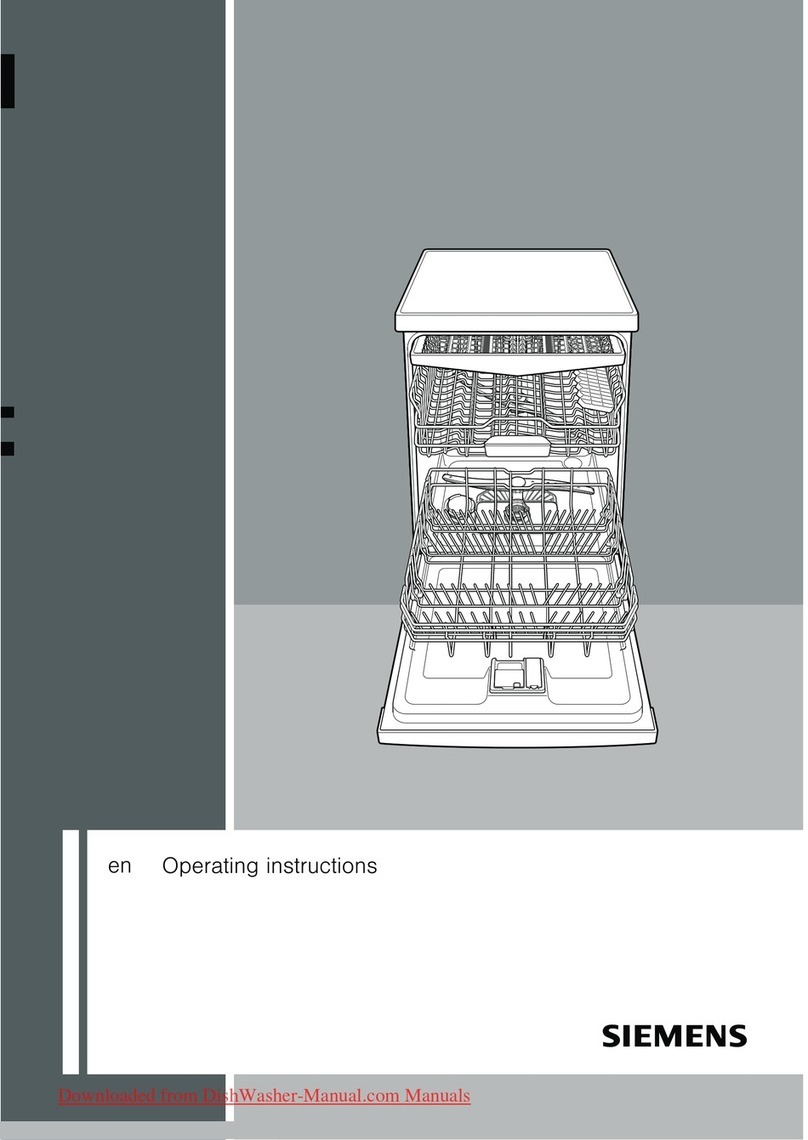IMPORTANT SAFETY INSTRUCTIONS
Read all instructions before using this appliance.
AWARNING--When using this
appliance, always exercise basic
safety precautions, including the
following:
,Use this appliance only for itsintended
purpose, as you will find described in this
Use and Care Guide.
"This dishwasher must be properly
,-.
_i _ installed and located in accordance
with the Installation Instructions
before it is used. If you did not
receive an Installation Instructions sheet with your
dishwasher, you can obtain one by calling, toll
free, the GE Answer Center,_800_626.2000.
--This appliance must be connected to a grounded
metal, permanent wiring system; or an
equipment-grounding conductor must be run
with the circuit conductors and connected to
the equipment-grounding terminal or lead of
the appliance.
--Connect to a properly rated,protected and sized
power-supply circuit to avoid electrical overload.
.Do not store or use combustible
materials, gasoline or other
flammable vapors and liquids
in the vicinity of this or any other appliance.
•Use only powder or liquid detergents or wetting
agents recommended for use in a dishwasher.
.Do not wash plastic items unless marked
"dishwasher safe" or the equivalent. For plastic
items not so marked, check the manufacturer's
recommendations.
.Load light plastic items so they will not
become dislodged and drop to the bottom of the
dishwasher--they might come into contact with
the heating element and be damaged.
To minimize the possibility of injury.
,When loading items to be washed:
A. Locatesharp items so that they arenot likely
to damagethe doorseal, and
B. Loadsharp knives with the handlesup to
reduce the risk of cut-type injuries.
.Do not tamper with controls.
,Do not touch the heating element during or
immediately after use.
,Do not operate your dishwasher unless all enclosure
panels are properly in place.
,Do not abuse, sit on, or stand on the door or dish
rack of the dishwasher.
.Close supervisionis necessaryif this appliance
isused by ornear children.Do not allowchildren
to play inside,onor withthis applianceor any
discardedappliance.Disposeof discarded
appliancesand shippingorpackingmaterial
properly.Beforediscardinga dishwasher,remove
the doorof the washingcompartment.
.Keep all washingdetergentsand wettingagents
outof the reach ofchildren,preferablyin a locked
cabinet.Observeall warningson containerlabels
to avoidpersonalinjury.
_,_ .To minimizethe possibilityof
electricshock,disconnectthis
appliancefromthe power supply
before attemptingany maintenance.NOTE:
Turningthe controldialto the OFFposition
doesnot disconnectthe appliancefrom the
powersupply.We recommendhavinga qualified
technicianserviceyourappliance.
A WARNING--HYDROGENGAS is
produced by the chemicalaction
withinyourwater heater.It can
accumulatein the water heaterand/or
waterpipes ifhot waterhasnot beenused fora
periodof twoweeksor longer.HYDROGENGAS
IS EXPLOSIVE.Toprevent the possibilityof
damageor injury,if youhavenot used hotwater
fortwo weeksor more, ormoved intoa residence
inwhichthe hot watersystemmay not havebeen
usedfor sometime,turn onall hot water faucets
and allowthemto run forseveralminutesbefore
usingany electricalappliancewhichis connected
to the hot watersystem.Thiswill allow any
hydrogengas to escape.Also, sincethe gas is
flammable,do not smokeor usean open flame
or applianceduringthisprocess.
SAVE THESE
INSTRUCTIONS
3
